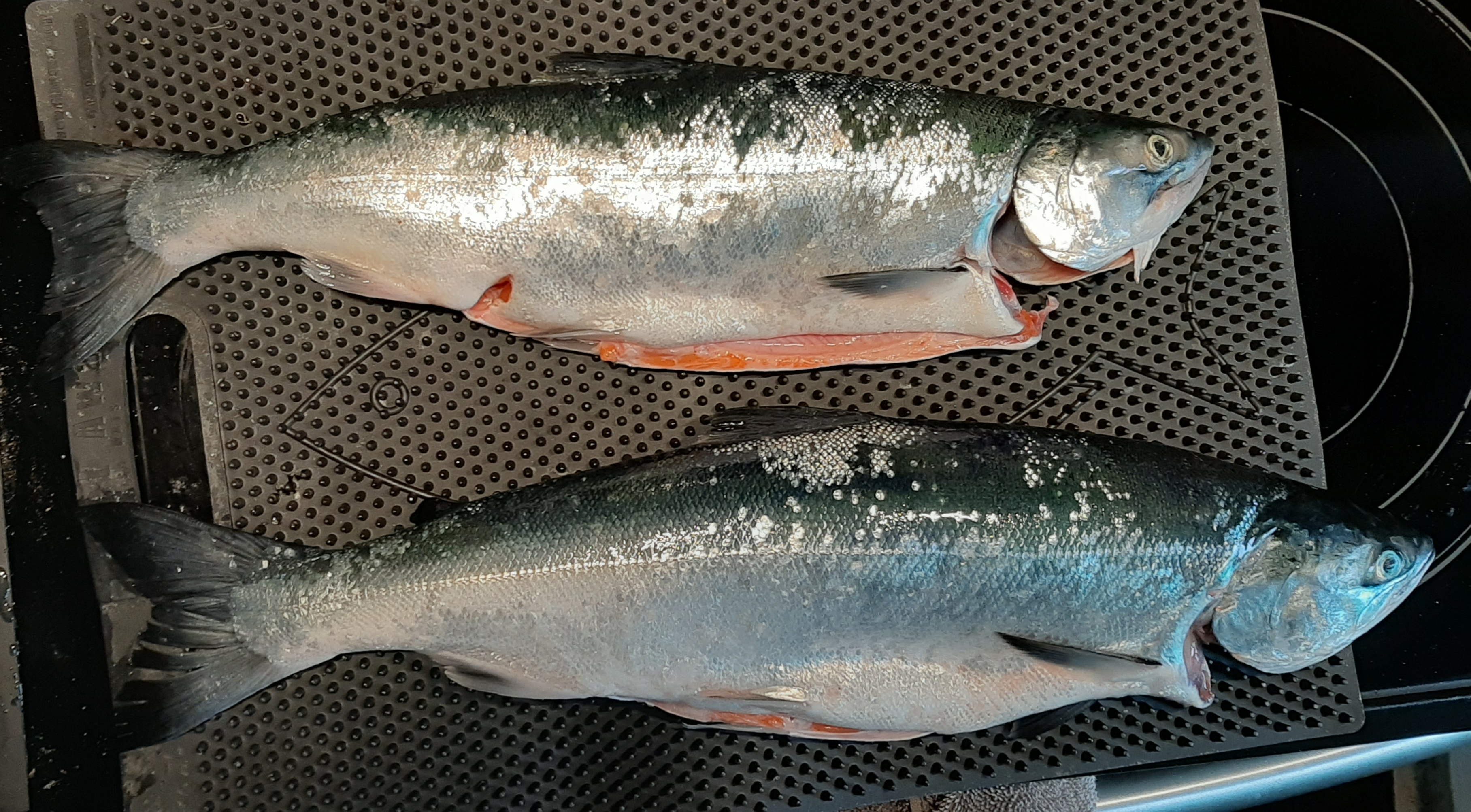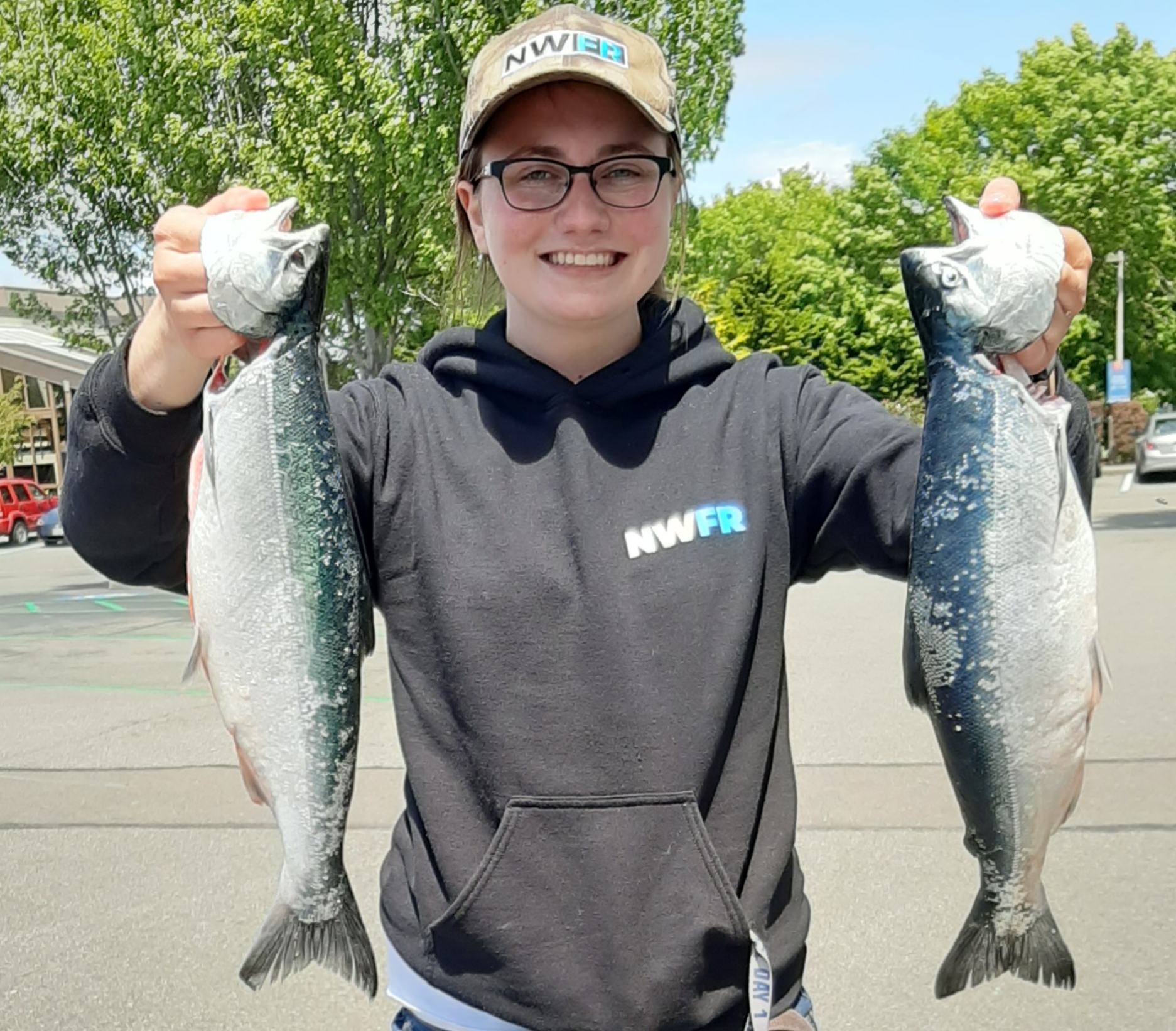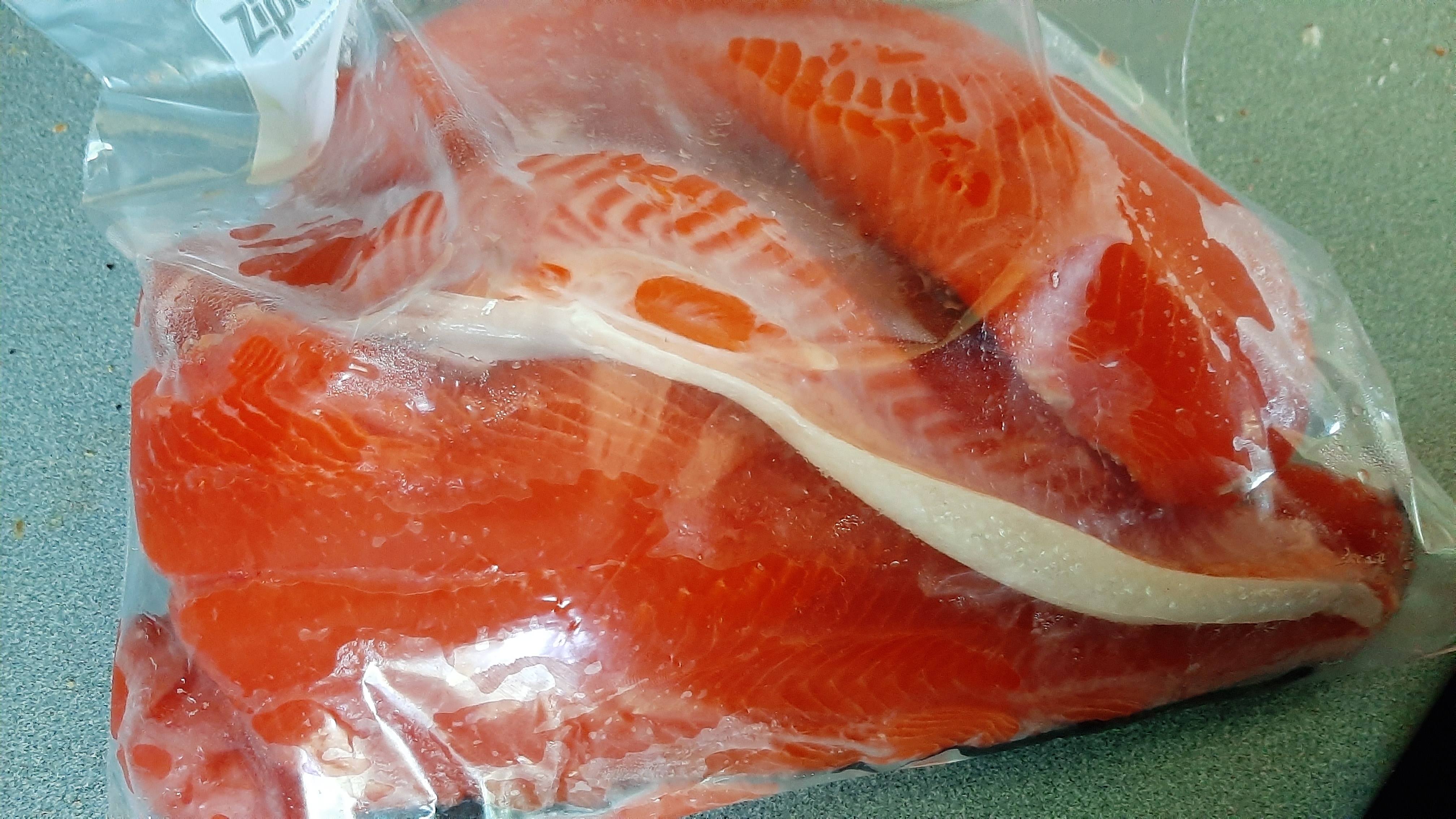Puget Sound Resident Coho
by
Hannah Pennebaker , July 12, 2020
Over the last few years, my salmon fishing has mainly consisted of lining up shoulder to shoulder with other eager anglers along the Puyallup or Carbon River. River fishing is easy and cheap, but it always runs the risk of another angler taking your spot when you land your fish or step away from the line to change rigs. I've filled out my punch cards on rivers in years past, but last month when I was given the opportunity to chase Puget Sound resident coho, I jumped on it. Trolling of any kind is both the most relaxing and most exciting way to fish. Once your rods are all set up and downriggers are in place, focus and anticipation take over. Then, after a few minutes of no bites, your mind wanders to the beautiful scenery; the view of Mt. Rainier, the waves crashing on shore. When you least expect it, your rod bends in half and the drag screams. Fish on!
Puget Sound resident coho are interesting creatures. Rather than go to the open ocean like their migratory cousins, they choose to stay close and feast on krill. These fish get a deep shade of red to their meat from the krill in their diet, almost sockeye like in appearance. They tend to be closer to 3 pounds in June, but get bigger and bigger by the week until they rival their migratory cousins in size. Excited for the fall salmon run? No need to wait, these resident coho are already out there!
Beginning the day at 7am, we launched at the Edmonds boat sling. They take all the work out of launching! No backing in, unhooking the boat, and rubbing shoulders with other boaters. All you have to do is drive up when it's your turn, and they strap up your boat to their crane and gently lower it into the water. Once we launched, we ran south, passing the city of Seattle, and began trolling north in about 300 feet of water once we started marking fish. We trolled the edge of the current created by the rocky northern outcropping of West Point in the distance, chasing the salmon feeding on krill here. It wasn't long before we got our first fish in the boat, the biggest one of the day, at about 4 pounds. The weather was temperamental, we suspected this might've been the reason we were one of the only boats out there! White caps and bursts of rain and wind were abundant, but this did not stop us from putting some nice fish in the boat.
So what sort of techniques work to get these fish in your boat? The right depth and speed are as important, if not more, than tackle selection. We dropped our downriggers at depths of 30 to 60 feet. We also straight lined 2 more poles with 8oz weights, and tried a Deep Six diver, but neither of these poles got hit because they didn't quite go deep enough. As for speed, we trolled between 2.8 and 3.5 MPH. Another fisherman on the boat looked at the angle of the lines and we adjusted our speed accordingly to keep them at a 45 degree angle with the water. These fish like a fast troll! Most of our hits were closer to 3.5 MPH.
As for tackle, we tried a variety of lures to catch the cohos' attention. I chose a green hoochie and a green flasher with no scent, and this setup was the first to catch a fish. We also tried tipping Old Goat lures with cured herring with good success. The key here is to go smaller, these fish aren't as large as blackmouth or their ocean going cousins. Herring strips proved to be essential to get their attention. We trolled with Okuma Coldwater line counter reels, which were perfect for knowing exactly how far the line was out and how close the fish were while we were bringing them in. We did not troll very far from the boat, as coho are not boat shy. There was a strong outgoing tide, and we tried trolling with the tide and against it. Direction did not seem to matter to the fish, but trolling with the tide was less choppy and windy for the fishermen!
Before trying your hand at resident coho, it's important to know the rules and regulations. You must pinch your barbs, as the Puget Sound is a barbless fishery. The limit is 2 fish, hatchery or wild. Chinook are closed, and if you catch one, you must release it without removing it completely from the water. Coho have large eyes and white gums. Chinook have black spots on their tails and black gums, hence the moniker "blackmouth". Always verify the species before bringing your catch onto the boat. It's a good idea to bonk and bleed your fish right away, then immediately put them in a cooler for the best meat quality.
Now that you know where to find the fish, what kind of tackle to use, and how fast to troll, go out and catch some of these amazing fish. When the fishing is good, the action can be non stop. These salmon are perfect for kids as they don't have as much attitude or size as ocean going salmon, but they still put up plenty of fight. Resident coho are delicious barbecued or smoked, perfect for the summer. Now is the best time to catch them, and they get bigger and bigger by the week. This is a great way to scratch that salmon itch and fill out a few spots on your punch card before the big boys start migrating in the fall!
Hannah Pennebaker graduated from Pacific Lutheran University with a degree in Environmental Studies. She enjoys both freshwater and saltwater fishing adventures in the Puget Sound area with her fishing group, the Straw Hat Fishermen.
Comments
Why is this comment inappropriate?
Delete this comment? Provide reason.



